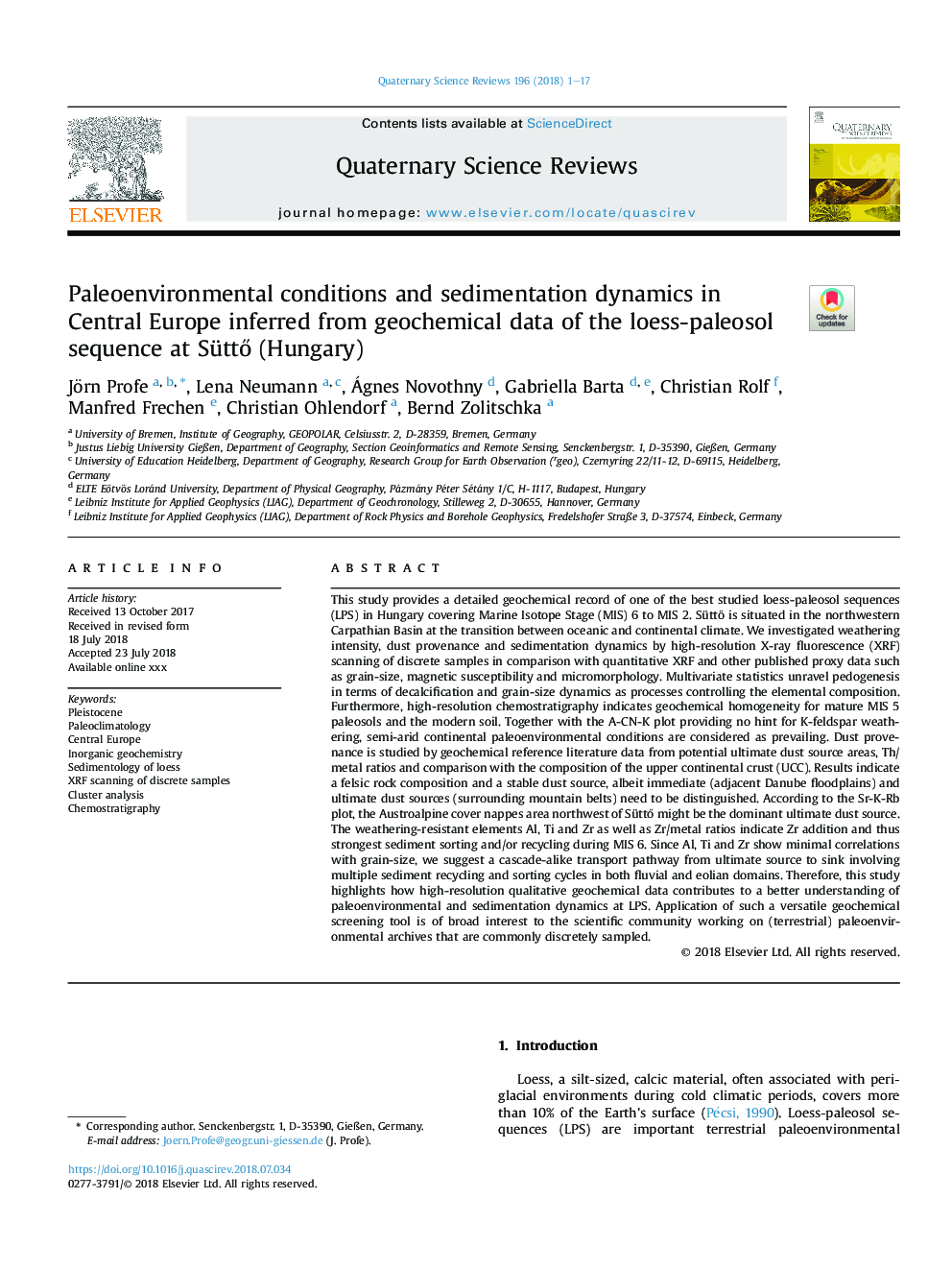| کد مقاله | کد نشریه | سال انتشار | مقاله انگلیسی | نسخه تمام متن |
|---|---|---|---|---|
| 8914636 | 1640739 | 2018 | 17 صفحه PDF | دانلود رایگان |
عنوان انگلیسی مقاله ISI
Paleoenvironmental conditions and sedimentation dynamics in Central Europe inferred from geochemical data of the loess-paleosol sequence at SüttÅ (Hungary)
دانلود مقاله + سفارش ترجمه
دانلود مقاله ISI انگلیسی
رایگان برای ایرانیان
کلمات کلیدی
موضوعات مرتبط
مهندسی و علوم پایه
علوم زمین و سیارات
زمین شناسی
پیش نمایش صفحه اول مقاله

چکیده انگلیسی
This study provides a detailed geochemical record of one of the best studied loess-paleosol sequences (LPS) in Hungary covering Marine Isotope Stage (MIS) 6 to MIS 2. SüttÅ is situated in the northwestern Carpathian Basin at the transition between oceanic and continental climate. We investigated weathering intensity, dust provenance and sedimentation dynamics by high-resolution X-ray fluorescence (XRF) scanning of discrete samples in comparison with quantitative XRF and other published proxy data such as grain-size, magnetic susceptibility and micromorphology. Multivariate statistics unravel pedogenesis in terms of decalcification and grain-size dynamics as processes controlling the elemental composition. Furthermore, high-resolution chemostratigraphy indicates geochemical homogeneity for mature MIS 5 paleosols and the modern soil. Together with the A-CN-K plot providing no hint for K-feldspar weathering, semi-arid continental paleoenvironmental conditions are considered as prevailing. Dust provenance is studied by geochemical reference literature data from potential ultimate dust source areas, Th/metal ratios and comparison with the composition of the upper continental crust (UCC). Results indicate a felsic rock composition and a stable dust source, albeit immediate (adjacent Danube floodplains) and ultimate dust sources (surrounding mountain belts) need to be distinguished. According to the Sr-K-Rb plot, the Austroalpine cover nappes area northwest of SüttÅ might be the dominant ultimate dust source. The weathering-resistant elements Al, Ti and Zr as well as Zr/metal ratios indicate Zr addition and thus strongest sediment sorting and/or recycling during MIS 6. Since Al, Ti and Zr show minimal correlations with grain-size, we suggest a cascade-alike transport pathway from ultimate source to sink involving multiple sediment recycling and sorting cycles in both fluvial and eolian domains. Therefore, this study highlights how high-resolution qualitative geochemical data contributes to a better understanding of paleoenvironmental and sedimentation dynamics at LPS. Application of such a versatile geochemical screening tool is of broad interest to the scientific community working on (terrestrial) paleoenvironmental archives that are commonly discretely sampled.
ناشر
Database: Elsevier - ScienceDirect (ساینس دایرکت)
Journal: Quaternary Science Reviews - Volume 196, 15 September 2018, Pages 21-37
Journal: Quaternary Science Reviews - Volume 196, 15 September 2018, Pages 21-37
نویسندگان
Jörn Profe, Lena Neumann, Ágnes Novothny, Gabriella Barta, Christian Rolf, Manfred Frechen, Christian Ohlendorf, Bernd Zolitschka,